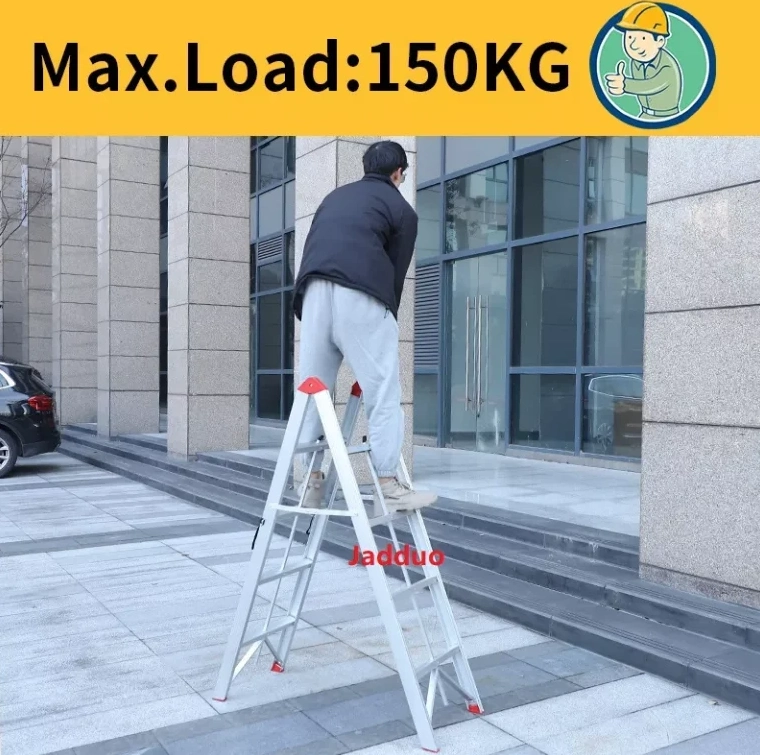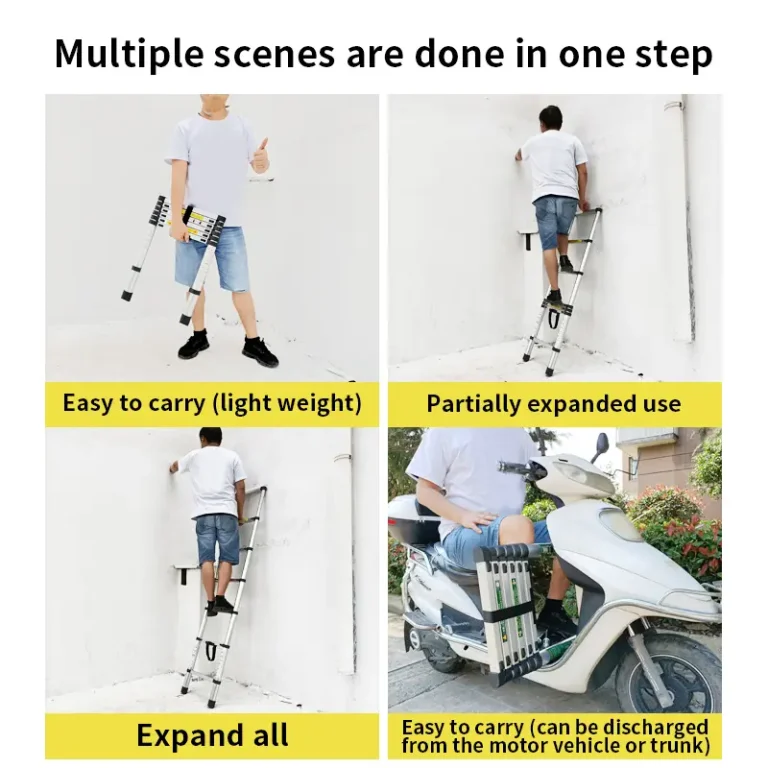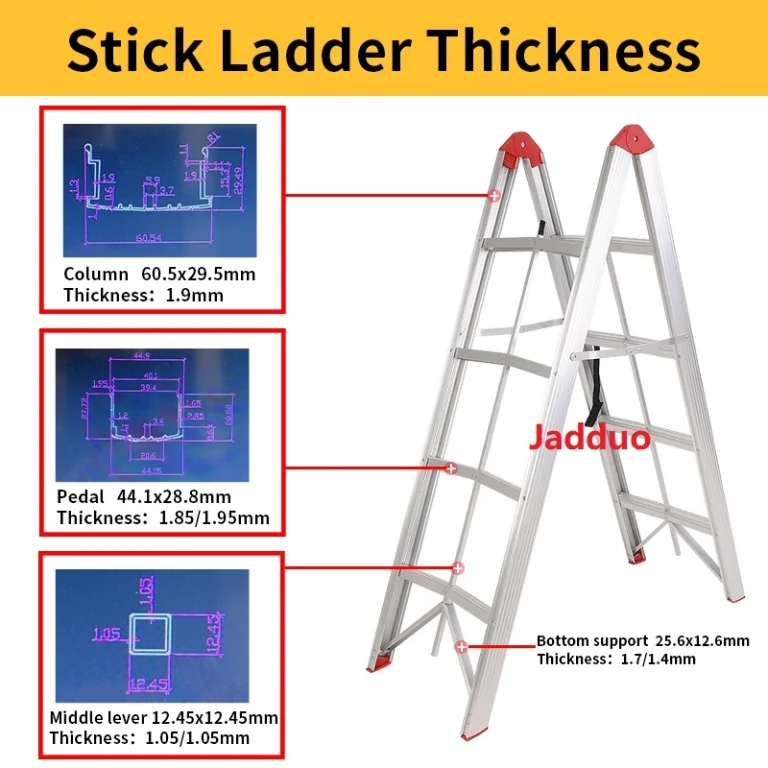Getting into a roof top tent seems simple at first sight. But the way you set up the ladder decides if your night ends in comfort or in worry. A ladder that wobbles, bends, or doesn’t match the height of your car can spoil the whole trip. Many campers only realize this after a long drive, when they are tired and just want to rest. Taking a few minutes to do things carefully makes the climb much safer.
When people share camping tips, the name Jadduo often appears. This company, located in Yongkang, known as China’s “Hardware Capital,” has been in the ladder business since 2015. Their ladders are now used in over 50 countries. They make telescopic ladders, A-frame ladders, and even special designs for unique needs. The factory area is 10,000㎡, and the company follows ISO9001 quality rules. Their products pass EN131 and ANSI checks, which are recognized in Europe and America. A 20-member R&D team works on making ladders safer and easier to use. For campers and travelers, their ladders are not just climbing tools, but part of your safety routine.
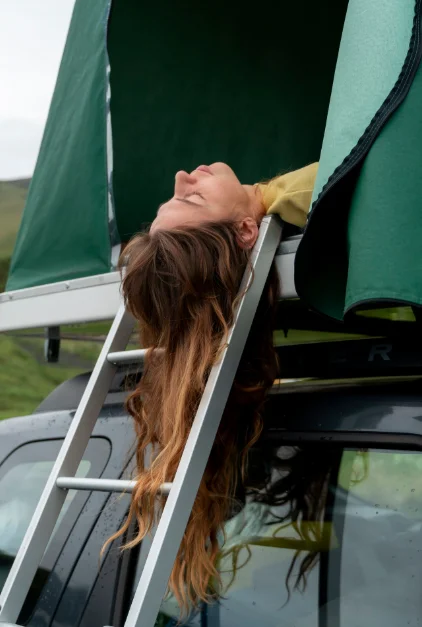
Why Is Choosing the Right Tent Ladder Important?
A ladder is more than just something you climb. It decides if you feel steady each time you go up or down. Picking the wrong one could mean slips, bad balance, or even accidents. Picking the right one helps you stay safe and makes your trip easier.
Stability and Load Capacity
The ladder should carry both your weight and the gear in your hands. Most high-quality ladders are made to hold up to 150 kg, which is enough for one adult plus bags or boxes. Wide steps with textured surfaces help you stand firm, even on rainy nights. Campers who carry water tanks or heavy coolers soon notice why this matters.
Material and Durability
Aluminum alloy ladders are light but also strong. They don’t rust quickly, even when exposed to rain or salty air near the coast. A good ladder should work in tough conditions like -20℃ mornings in the mountains or hot desert days around 50℃. A weak ladder will fail in these situations, which is why the material matters so much.
Convenience and Portability
Space is always short when you pack for a trip. Telescopic ladders are useful because they shrink down to less than one meter. This makes it possible to put them in the trunk or even behind a seat. Some weigh only 3–6 kg, about the same as a small pet, and you can carry them with one hand.
How Do You Prepare Before Setting Up a Tent Ladder?
Getting ready may feel boring, but skipping steps is how accidents happen. Most ladder accidents happen because people are in a rush.
Ground Surface and Placement Check
Check the ground where the ladder feet will stand. Hard, flat ground is best. If you must use grass, gravel, or sand, rubber foot covers help stop sliding. Without them, the ladder may sink into the soil slowly and tilt to one side.
Ladder Length and Adjustment
Make sure the ladder height fits your car and tent. Models with adjustable lengths of 2 m to 2.6 m work for most SUVs and pickups. A short ladder makes the angle too steep, which feels unsafe. A ladder that is too long may lean outward and lose grip on the tent.
Safety Inspection of Locks and Hooks
Always check locks and hooks before climbing. A Telescopic Tent Ladder With Hook can attach tightly to the tent base. Without this connection, even a strong ladder may move when you put your weight on it.
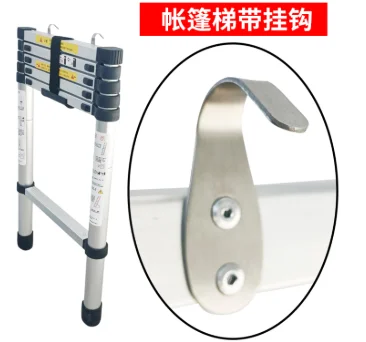
What Are the Correct Steps to Set Up a Roof Top Tent Ladder?
There is a simple order to follow when opening a telescopic ladder. Skipping a step often causes trouble later.
Positioning the Ladder at the Right Angle
The best angle is around 75°. You can check it by placing the base one meter away for every four meters of ladder height. At this angle, the ladder grips the ground well and won’t slide backward.
Securing Hooks or Connectors Firmly
Hooks need to lock onto the tent edge. Tired campers sometimes forget this late at night. One wrong step and the ladder may slip, which is dangerous when holding a flashlight or bottle.
Extending and Locking Each Section
Pull each section slowly and wait for the click that means it is locked. If a joint does not lock, the ladder may collapse halfway. Press gently to check. This small habit takes only seconds and prevents accidents.
How Can You Ensure Safety While Climbing a Tent Ladder?
Even if the ladder is set up right, how you climb decides if it stays safe. Many accidents happen because of bad habits.
Using Three-Point Contact Method
Always keep three contact points: two hands and one foot, or two feet and one hand. This triangle of support lowers the chance of slipping.
Avoiding Overreaching or Sideways Movements
Keep your body in the middle between the rails. Don’t lean sideways to grab bags or ropes. Even a small shift in weight can tip the ladder.
Wearing Proper Non-Slip Footwear
Wear shoes with grip that are clean. Avoid smooth sandals or leather soles. They can slide easily, especially if the steps are wet.
Why Should You Choose Jadduo Telescopic Tent Ladders?
Not every ladder is made with the same care. Some look fine online but fail in real use.
Telescopic Tent Ladder With Hook Features
This ladder adjusts to fit different car heights. The hook design makes it stay firm on the tent base. It folds small, so you can save space in your car. It also holds both people and gear without losing balance.
Black Oxidation 6cm Widened Step Advantages
The Black Oxidation 6cm Widened Step Telescopic Tent Ladder is designed for comfort. The wider steps spread weight across your feet, which helps reduce pain after climbing many times. In wet weather, the extra width gives a safer grip.
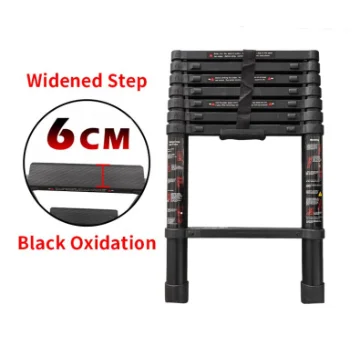
Trusted Quality and Certifications from Jadduo
These ladders are tested with EN131 and ANSI standards. These checks are used for construction ladders, so a camping ladder tested this way has a strong safety background.
What Are the Common Mistakes to Avoid When Using a Tent Ladder?
A good ladder still becomes unsafe if used wrongly.
Ignoring Weight Limits and Overloading
Never go above the weight rating. Household ladders usually hold 100–150 kg, while industrial ones carry more. Remember to count the bag or gear you carry when climbing.
Placing the Ladder on Uneven or Slippery Ground
Wet grass, snow, or mud make ladders unstable. Use rubber feet or a balance bar to add grip.
Skipping Regular Maintenance and Cleaning
Sand, mud, or dirt can block the telescopic parts. If not cleaned, they may not lock next time. Wipe the ladder dry after rain to keep it in good shape.
How Do You Maintain a Tent Ladder for Long-Term Use?
Good habits keep your ladder useful for many years.
Regular Inspection and Lubrication
Check rivets and bolts every month. If the ladder is stored for long, add some oil to moving parts.
Proper Storage in Dry and Safe Conditions
Store the ladder in a dry and shaded spot. Humid places or direct sun can reduce its life.
Checking and Replacing Worn Parts
Rubber feet slowly wear out but are very important for stability. Replace them when more than half worn.
FAQ
Q1: Can a tent ladder be used on sand or gravel?
A: Yes. But use rubber feet or stabilizers to stop it from sinking or sliding.
Q2: How much weight can a tent ladder carry?
A: Most ladders support 120–150 kg, which covers an adult and gear. Heavy-duty ones can hold more.
Q3: What is the safest angle to set a tent ladder?
A: Around 75°. Place the base one meter away for every four meters of ladder height.

